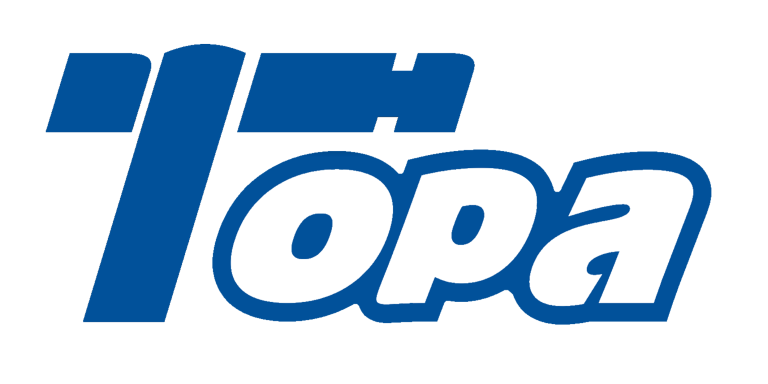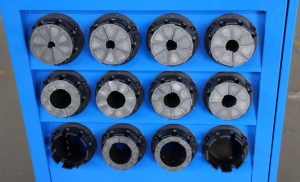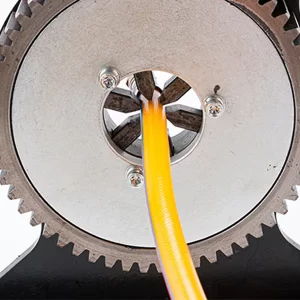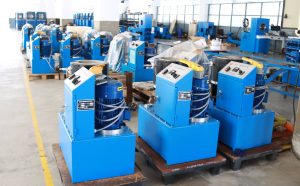Understanding what software integrations enhance hydraulic hose crimpers is essential for businesses aiming to optimize efficiency, quality control, and operational insight. This article, “What Software Integrations Enhance Hydraulic Hose Crimpers?”, explores the types of software solutions that connect with crimping machines to streamline processes. But here’s the kicker: modern hydraulic hose crimpers are no longer standalone devices; they increasingly operate within a connected ecosystem. We’ll cover digital controls, data logging, IoT applications, maintenance management, cybersecurity, and emerging trends that help manufacturers and service providers stay competitive and agile.
1. What are software integrations for hydraulic hose crimpers?
Software integrations connect hydraulic hose crimpers to digital platforms that improve operational control and data management. These integrations include programmable control software, data logging applications, enterprise resource planning (ERP) systems, and maintenance management tools. What’s the real story? Integrations enable real-time monitoring, quality assurance, and automated workflows. For example, a hose assembly plant connected their crimpers to an ERP system, syncing production schedules and inventory updates seamlessly. This connectivity reduces manual errors and accelerates decision-making. Overall, software integrations transform crimpers from isolated machines into intelligent components within a smart manufacturing environment.
| Integration Type | Purpose | Business Benefit |
|---|---|---|
| Digital Control Software | Automates crimping parameters | Enhances precision and speed |
| Data Logging | Records production data | Improves traceability |
| ERP Systems | Manages scheduling and inventory | Streamlines operations |
| Maintenance Software | Monitors machine health | Reduces downtime |
2. How do digital controls integrate with hydraulic hose crimpers?
Digital controls provide programmable logic and user-friendly interfaces that directly connect with crimping machines. These controls allow operators to set precise crimping parameters, save profiles for different hose types, and monitor cycle progress. Ready for the good part? Touchscreen displays with customizable software enhance usability and reduce training times. A manufacturing line implemented PLC-based controls on crimpers, cutting setup times by 30% and improving quality consistency. Integration allows remote adjustments and data retrieval, enabling better process control. This fusion of hardware and software empowers operators to achieve repeatable, high-quality crimps efficiently.
| Control Type | Features | Impact |
|---|---|---|
| Programmable Logic Controllers (PLCs) | Automated process control | Precise and repeatable crimps |
| Touchscreen Interfaces | User-friendly customization | Faster setup and adjustments |
| Remote Access | Real-time monitoring and updates | Improved response time |
3. What role does data logging software play in crimper operations?
Data logging software captures detailed records of each crimp cycle, including pressure, force, and cycle time. This data supports quality assurance, traceability, and compliance with industry standards. This is where it gets interesting: a hydraulic hose manufacturer used data logs to analyze defects and optimize processes, reducing scrap rates by 20%. Logs provide transparency for customers and support warranty claims. Integration with cloud-based platforms allows centralized data management, facilitating audits and continuous improvement. Tracking each crimp’s parameters ensures that every hose meets exacting specifications.
| Data Logged | Purpose | Benefit |
|---|---|---|
| Crimp Pressure | Ensures correct force applied | Prevents over/under crimping |
| Cycle Time | Monitors production efficiency | Identifies bottlenecks |
| Machine Status | Detects faults or delays | Enables proactive maintenance |
4. How can enterprise resource planning (ERP) systems connect with crimpers?
ERP systems link hydraulic hose crimpers to broader manufacturing and supply chain management platforms. This connection streamlines production scheduling, material tracking, and inventory control. But here’s the kicker: integrating crimper data into ERP allows real-time updates on job progress and resource usage. For example, a factory reduced lead times by 15% after ERP integration improved material availability and workflow synchronization. ERP-crimper connectivity supports just-in-time manufacturing, reduces stockouts, and provides detailed production analytics. The synergy between crimpers and ERP fosters operational transparency and agility.
| ERP Feature | Function | Operational Advantage |
|---|---|---|
| Production Scheduling | Aligns jobs and machine use | Maximizes throughput |
| Inventory Management | Tracks hose materials | Minimizes stock shortages |
| Analytics | Provides performance reports | Supports data-driven decisions |
5. What are the advantages of integrating crimpers with maintenance management software?
Maintenance management software monitors hydraulic hose crimpers for signs of wear and predicts service needs. This predictive maintenance reduces unplanned downtime and extends machine lifespan. Ready for the good part? A company implementing such software decreased machine failures by 40%, saving costs and boosting reliability. The software tracks usage hours, error codes, and inspection outcomes, alerting technicians before problems escalate. Integration with scheduling systems ensures timely repairs without disrupting production. Effective maintenance integration enhances machine availability and lowers total cost of ownership.
| Maintenance Function | Description | Business Impact |
|---|---|---|
| Condition Monitoring | Tracks machine health metrics | Prevents unexpected breakdowns |
| Scheduled Alerts | Notifies for service needs | Ensures timely maintenance |
| Repair Management | Organizes repair workflows | Reduces downtime |
6. How do IoT technologies enhance hydraulic hose crimper functionality?
IoT technologies enable remote monitoring, data analytics, and control of hydraulic hose crimpers. Sensors collect real-time data on machine status, environmental conditions, and performance metrics. This is where it gets interesting: an IoT-enabled crimper system allowed a factory manager to oversee multiple lines remotely, identifying issues before production stopped. IoT platforms aggregate data for trend analysis and predictive maintenance. The result is smarter, more efficient crimping operations with reduced manual intervention. IoT enhances connectivity and integrates crimpers into Industry 4.0 frameworks.
| IoT Capability | Feature | Benefit |
|---|---|---|
| Remote Monitoring | Real-time status updates | Quick problem identification |
| Data Analytics | Performance trend tracking | Optimizes machine use |
| Automated Alerts | Fault and maintenance warnings | Minimizes downtime |
7. What security considerations exist for software integrations?
Connecting crimpers to software systems introduces cybersecurity risks such as unauthorized access, data breaches, and operational disruption. But here’s the kicker: robust security measures like firewalls, encryption, and access controls are essential. Companies adopting secure VPNs and regularly updating software reduce vulnerabilities. Compliance with industrial cybersecurity standards protects sensitive operational data. Training staff on security best practices and monitoring system logs further strengthens defenses. Security safeguards maintain machine integrity and customer trust in connected environments.
| Security Measure | Purpose | Effectiveness |
|---|---|---|
| Encryption | Protects data in transit | Prevents interception |
| Access Controls | Restricts user permissions | Limits unauthorized use |
| Regular Updates | Fixes software vulnerabilities | Keeps systems secure |
8. How does software integration improve quality control processes?
Software integration automates quality control by tracking crimp parameters, detecting anomalies, and generating reports. Statistical process control (SPC) software analyzes production data to identify trends and deviations. Ready for the good part? Automated alerts notify operators immediately if crimp parameters fall outside acceptable ranges. A factory leveraging SPC tools reduced defects by 25%. Integration supports compliance with industry standards and streamlines audits. Overall, it raises production quality while minimizing manual inspection workloads.
| Quality Control Tool | Function | Advantage |
|---|---|---|
| Parameter Monitoring | Ensures process consistency | Early defect detection |
| Automated Alerts | Notifies deviations | Prevents faulty products |
| Reporting Tools | Generates compliance reports | Simplifies audits |
9. What training is required for operators to use integrated software?
Operators need training on software interfaces, troubleshooting, and interpreting data outputs. Training programs include hands-on practice, video tutorials, and certification exams. This is where it gets interesting: companies providing comprehensive training see faster adoption and fewer operational errors. Continuous education keeps operators updated on software updates and new features. Effective training empowers users to leverage integrations fully and maintain high-quality operations.
| Training Type | Delivery Method | Outcome |
|---|---|---|
| Hands-On Workshops | Practical software use | Builds operator confidence |
| Online Tutorials | Self-paced learning | Flexible training schedules |
| Certification | Formal assessment | Ensures competency |
10. How do software updates and vendor support impact integration?
Regular software updates ensure system security, add new features, and fix bugs. Vendor support offers troubleshooting, patches, and training. But here’s the kicker: timely updates prevent vulnerabilities and keep integrations running smoothly. A supplier with strong support reduced client downtime significantly. Contracts often include update schedules and service-level agreements. Support ensures integration reliability and user satisfaction.
| Support Aspect | Description | Benefit |
|---|---|---|
| Software Updates | Bug fixes and enhancements | Maintains performance |
| Technical Support | Troubleshooting assistance | Quick issue resolution |
| Training Services | User education and upgrades | Maximizes software use |
11. What are common challenges when implementing software integrations?
Challenges include compatibility issues with legacy equipment, operator resistance, and complex installation. Data migration and system interoperability can delay deployment. Ready for the good part? Thorough planning, pilot testing, and stakeholder involvement ease transitions. Vendors offering customization and training mitigate resistance. Successful companies address these hurdles proactively, achieving smoother integration and faster ROI.
| Challenge | Cause | Solution |
|---|---|---|
| Compatibility | Outdated equipment | Upgrading or custom adapters |
| User Resistance | Change discomfort | Training and involvement |
| Integration Complexity | Multiple systems | Phased rollouts |
12. How can custom software solutions benefit hydraulic hose crimping?
Custom software tailors features to specific production needs, integrating proprietary workflows and unique data requirements. This is where it gets interesting: manufacturers benefit from bespoke reporting, specialized controls, and enhanced automation. A custom solution enabled a client to reduce manual data entry by 70%, improving accuracy. Customization enhances flexibility and competitiveness by aligning software closely with operational realities.
| Customization Area | Benefit | Example |
|---|---|---|
| Reporting | Tailored data outputs | Unique client KPIs |
| Control Software | Specialized machine commands | Proprietary hose fittings |
| Workflow Integration | Seamless production flow | Automated material tracking |
13. What cost considerations come with software integration?
Costs include software purchase, licensing fees, hardware upgrades, and training expenses. Initial investment may be significant but offers returns via efficiency and quality improvements. But here’s the kicker: budgeting for ongoing maintenance and upgrades is critical. A cost-benefit analysis from a factory showed payback within 18 months due to reduced waste and downtime. Companies should evaluate total cost of ownership and potential gains before committing.
| Cost Element | Description | Impact |
|---|---|---|
| Licensing Fees | Software usage rights | Recurring expenses |
| Hardware Upgrades | Required infrastructure | One-time capital cost |
| Training | Staff education | Enables effective use |
14. How do industry standards influence software integration for crimpers?
Standards like ISO and SAE set requirements for data accuracy, traceability, and quality control. Software must support compliance through accurate logging and reporting. Ready for the good part? Adhering to standards facilitates certifications and market acceptance. Regulatory compliance protects companies from legal risks and enhances brand reputation. Integrations designed with standards in mind provide long-term value and reliability.
| Standard | Focus | Compliance Benefit |
|---|---|---|
| ISO 9001 | Quality management | Ensures consistent processes |
| SAE J517 | Hose and fitting specs | Guarantees product safety |
| Regulatory Mandates | Data traceability and safety | Meets legal requirements |
15. What future trends are emerging in software for hydraulic hose crimpers?
Emerging trends include AI-driven quality control, cloud-based management, and augmented reality (AR) for training and diagnostics. This is where it gets interesting: AI can predict failures before they happen, while cloud systems enable remote access and collaboration. AR assists operators with visual guides during crimping and inspections. These innovations promise higher productivity, lower costs, and smarter manufacturing.
| Trend | Description | Business Advantage |
|---|---|---|
| Artificial Intelligence | Predictive analytics | Reduces defects and downtime |
| Cloud Computing | Remote access and data sharing | Enhances collaboration |
| Augmented Reality | Operator assistance | Improves training and accuracy |
FAQ Section
Q1: What is software integration for hydraulic hose crimpers?
Software integration connects crimpers with digital systems to improve control, monitoring, and data management.
Q2: How does data logging benefit crimper operations?
It records operational parameters to ensure quality and traceability.
Q3: What security risks exist with software integration?
Risks include unauthorized access and data breaches, requiring strong cybersecurity measures.
Q4: Why is operator training important for integrated software?
Proper training ensures effective use and reduces errors.
Q5: What future software trends will affect hydraulic hose crimpers?
AI, cloud computing, and augmented reality are set to enhance crimper capabilities.




